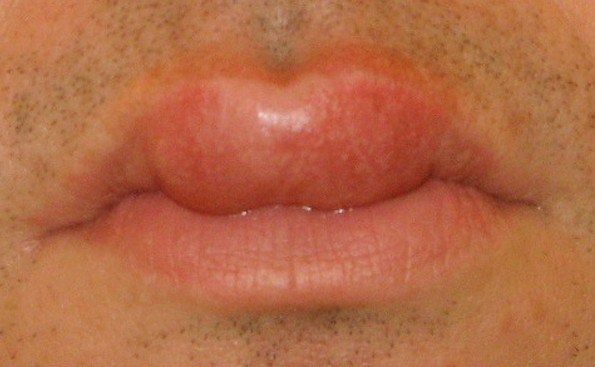Table of Content
The early stages of healing usually involve inflammation, which can cause moderate to severe swelling. Mild to moderate swelling may persist for up to 6 months depending on the type of surgery you had. Synovial fluid reduces friction in your joints so you can move them more easily.
Fortunately, there are plenty of natural cough suppressants that you can try right now in... To encourage drinking add 1 tsp of fresh-squeezed fruit juice like lemons, oranges, strawberries, and kiwis to each quart of water. Alternatively, you can use grapefruit essential oil in the oil mixture used for the massage above as well.
When to See a Healthcare Provider
Basically, you give your circulatory system a little assistance by letting gravity do its thing. Apart from the suggestions mentioned in the article, you can try parsley tea to reduce edema – see more information HERE. I put off bilateral hip replacement as long as I could.
A person with diabetes and an untreated infection in a foot or leg may develop gangrene. Gangrene involves tissues dying as a result of severe infection or reduced blood supply. A person may experience swelling in their legs and ankles for a range of reasons, including those below. Coriander seeds are also helpful treatment for edema. The coriander seeds’ anti-inflammatory property can help decrease swelling and pain.
Chronic venous insufficiency
Try these effective home remedies right away and be relieved of edema in feet, legs and ankles. You should use above remedies for at least one or two months to receive positive results. However, the writing is solely for the informational purpose, so you need to get advice from your doctor before applying any home remedy. If you have any question or comment, please leave them below, I will respond you as soon as possible.

Talk with your doctor about whether you need to lose weight and healthy ways to go about doing so. Reducing your sodium intake can help decrease swelling in your body, including in your feet. Opt for low-sodium versions of your favorite foods, and try to refrain from adding salt to meals. At the Center for Vascular Medicine, our mission is to help patients with their vascular diseases in a cost-effective and compassionate manner. We specialize in the diagnosis and treatment of venous and arterial diseases in the legs, feet, and pelvis.
Don’t
Plus, the seeds also encourage good blood circulation. It is recommended to drink it once each day before eating breakfast. Another option is to mix equal amounts of apple cider vinegar and warm water and then dip a towel in the mixture and apply it on the affected area for a few minutes. It is suggested to repeat this a few times per day. Swollen legs can also be a manifestation of kidney problems, heart or liver failure. Whenever some of these problems occur the body experiences difficulties when it comes to fluid regulation.

It wasn’t until I got in the hospital because my swollen legs began to get blisters and drain..that they found out it was lymphedema. One easy way to keep your legs raised for an extended period of time to reduce leg edema is to sleep on your back with a pillow under your ankles. This will help to drain excess fluid that has built up around your ankles and feet. Edema is not a serious condition, but it can be quite uncomfortable. Thankfully, many simple home remedies can alleviate this problem.
These natural methods can help to relieve occasional bouts of leg swelling and give you welcome relief from the discomfort that ankle edema causes. It is important to tell the difference between swollen ankles caused by “everyday” activities, and edema that requires treatment by a doctor. Generally, harmless ankle and leg swelling occurs on both legs and doesn’t have other ominous symptoms like shortness of breath, chest pain, or bluish skin . To stay hydrated, aim to drink about half your body weight in ounces of water per day (about 75 ounces of water per day for a 150-pound person).
It will cause your ankles to look puffy and feel tight and stiff, which may restrict your ankle motion and ability to fit in your shoes. Swelling in your ankles, feet or legs should go away on its own, but there are some things you can try to help. Having a healthy potassium intake can also help relieve edema. Foods rich in potassium include bananas, sweet potatoes, beans, and spinach, among many others.
Swelling in the ankles, feet and legs is often caused by a build-up of fluid in these areas, called oedema. If you have ever dealt with edema before, you know how much of a hassle it can be. Edema refers to swelling in your legs, ankles, and feet that is not related to any injury. Grapefruit oil has diuretic properties, and utilizing it as a topical therapy can considerably scale back edema-based swelling.

Even to the point of drying between toes after a shower. I have also been advised not to have manicures/ peds for same reason and in the event the bowls have not been cleaned properly. Pour over a cup of boiled water or submerge into a tea pot.
Liver disease causes problems with the liver function that can lead to swelling in the abdomen and legs. Water retention, known as edema, is swelling in parts of the body. Learn the symptoms, causes, and remedies to try. Taking 200 to 400 milligrams of magnesium daily might help with the swelling. But before you take any kind of supplement, ask your doctor. Magnesium supplements aren’t right for everyone, especially if you have a kidney or heart condition.


No comments:
Post a Comment